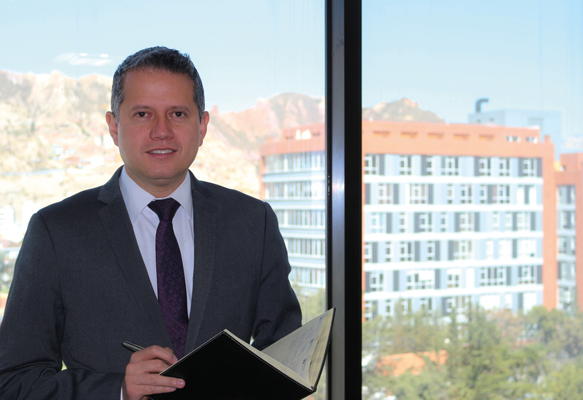BIM: The microfinance pioneers

Few institutions can match BIM’s history of milestones and achievements within their sector. This asset manager has been operating in Latin America and the Caribbean for 21 years, it has set records with 10 successful investment vehicles and invested more than $230m in 280 microfinance operations. BIM specialises in “impact investments” and its portfolio covers 14 countries and 96 companies, which include 74 microfinance institutions.
The company headquarters is in Bolivia, a country that has become a model for the microfinance sector and one that drives BIM’s strategies and objectives. “The experience of Bolivian microfinance institutions, especially the DFI [Development Financial Institution] has begun to be exported throughout the region,” says Fernando Sanchez, BIM’s CEO. The company is also present in two other countries.
Bolivia, with its growing pool of entrepreneurs and SMEs, inspired BIM to create the first microfinance fund, Locfund, in 2008 (a fund with an original portfolio of $31m).
Since then the progress made has provided fertile ground for BIM to propose new and better funds, with a broader vision. “We are driven by the challenge of achieving greater milestones, we want to participate in the deepening process of the industry, but mainly we are passionate about creating ways to expand financial inclusion with real benefits for end customers, who usually live below poverty line,” adds Mr Sanchez.

Fernando Sanchez, CEO of BIM.
Pioneering work
Locfund, BIM’s flagship fund, was the first to provide loans to the region’s microfinance institutions in local currency, taking on foreign exchange risk management in the process. This meant a radical shift in the approach to credit access by small and medium microfinance institutions, which were often hampered by the risks that loans in US dollars entail.
Mr Sanchez remembers how during the period there was a large gap in terms of financing, both for microfinance institutions and for the microfinance investors, due to the currency issue and the exchange rate. During the eight years of Locfund’s operations, $69.2m was disbursed in 99 loan operations, supporting a total of 92,521 loans to micro-entrepreneurs (60% women) from 45 microfinance institutions across 13 countries in Latin America and the Caribbean. Together, the microfinance institutions work with 1.8 million entrepreneurs, who are mostly below the poverty line. Investors were able to participate in the microfinance industry growth, with a less risky environment and achieve profitability.
Constant innovation
Thanks to the boost of the first fund and the confidence of the investors, BIM launched Locfund II. Locfund II doubled the size of the previous fund, while also adapting to the new microfinance environment through greater social awareness, along with new components that helped strengthen the microfinance industry in the region. “Demand for financing in local currency continues to grow, so the fund expanded its size in order to provide more loans in local currency to the microfinance institutions in the region,” explains Mr Sanchez.
The added value of this fund lies in the integral support that it provides to its clients. Besides working with financing, it includes assistance to take advantage of local capital markets, through two components: underwriting and creating secondary markets. Also, the strengthening of the microfinance institutions and consolidating their sustainability over time became a key goal, as did paying attention to aspects such as environmental and social impacts and corporate governance – all are crucial during the investment cycle stages.
To date, Locfund II has provided more than $126m through 147 loans to 47 microfinance institutions that serve more than 1.3 million end-customers in 14 countries. In addition, Locfund II has provided 74 technical assistance programmes. In terms of financial inclusion and social results, of the total number of clients served, more than 61% are women and 51% live in rural areas.
Leading the field
BIM also manages other vehicles, including:
- Próspero Microfinanzas – Specialising in equity investment for microfinance institutions, with 6 investors, serving 9 microfinance institutions
- Microfinanzas Latin America (MILAC) – Focused on private investors, BIM has 70 of these and serves 14 microfinance institutions
- TSF and GIF – A technical assistance component for microfinance institutions in several fields; and a governance and financial inclusion programme. Together they serve 54 microfinance institutions and have two investors.
In total, BIM manages a portfolio worth a $111m, and provides the services of financing, investment or technical assistance to 74 microfinance institutions in the region, which represents 20% of the market. Mr Sanchez says that no other asset manager serves so many microfinance institutions in Latin America and the Caribbean.
“The BIM team is of course very proud of these achievements,” says Mr Sanchez, “and we are especially motivated to pursue new challenges.” BIM is now designing Locfund Next, a financial multiproduct supplier that aims to expand financial inclusion coverage in the region, which is still low, from 30%, to 40%. Clearly, they have the expertise and soundness to achieve it.
“The key to our strategy lies in the fact that we focus on responsible investments, promoting development and strengthening financial entities, aiming to generate impact and support for low-income sectors and micro-enterprises,” concludes Mr Sanchez.
Further information


